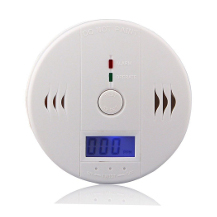
Carbon monoxide (CO) is a toxic gas that you cannot see or smell. CO is given off whenever fuel or other combustible materials are burned.
All people and animals are at risk of carbon monoxide poisoning. Breathing high levels of CO can cause severe illness or death in a matter of minutes.
It is important to follow safety advisories to prevent poisoning: do not use portable generators inside your home, garage, carport, basement or any other enclosed space,
such as a covered porch; do not use charcoal or gas grills or camping stoves inside your home; do not use propane or kerosene heaters inside your home;
and do not use your gas oven or stove top to heat your home.
The data viewed here are the counts of CO poisoning cases and the number of deaths by year.
Learn More about Carbon Monoxide:
Connecticut Carbon Monoxide
CDC Carbon Monoxide
 Carbon monoxide (CO) is a toxic gas that you cannot see or smell. CO is given off whenever fuel or other combustible materials are burned.
All people and animals are at risk of carbon monoxide poisoning. Breathing high levels of CO can cause severe illness or death in a matter of minutes.
Carbon monoxide (CO) is a toxic gas that you cannot see or smell. CO is given off whenever fuel or other combustible materials are burned.
All people and animals are at risk of carbon monoxide poisoning. Breathing high levels of CO can cause severe illness or death in a matter of minutes.